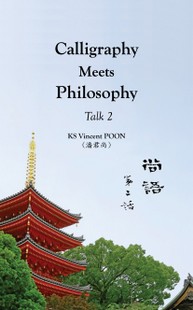Galleries and Translations > Recent Works / Poetry and Others > Replying to a Query at the Hills 山中問答
Replying to a Query at the Hills
(《山中問答》)
64 X 35 cm in Standard Script (楷書)
Translation
English Translation
Original Chinese
I was once asked why I longed (意) (1) to reside in seclusion (栖) (2) deep in the green hills,
1. 問余何意栖碧山,
Smiling and offering no reply, my mind was at ease and self-fulfilled (自閒)(3).
2. 笑而不答心自閒;
In the forest of peach blossoms, along the flowing stream, I went towards the very deep and serene (窅然) (4) place upon the hills,
3. 桃花流水窅然去,
Alas, another new world not of the human realm was revealed.
4. 別有天地非人間.
(Translated by KS Vincent POON, July 11, 2022)
FOR FURTHER TRANSLATION, FOOTNOTES, AND ELABORATIONS
PLEASE SEE :

Calligraphy Meets Philosophy - Talk 2 尚語 - 第二話
by KS Vincent POON (Aug. 2023)
ISBN 978-1-989485-32-3
Content is the soul of an artwork.
Thus, catching the soul of Chinese calligraphy requires understanding the literary contents. To facilitate this, the Calligraphy Meets Philosophy series presents traditional Chinese calligraphy alongside line-by-line translated texts with remarks and footnotes.
Calligraphy Meets Philosophy – Talk 2 (《 尚語∙第二話 》) includes calligraphies and translations of selected literary works by Cao Cao (曹操, 155-220 AD), Zhuge Liang (諸葛亮, 181-234 AD), Yen Shang (楊慎, 1488–1559 AD), Bai Juyi (白居易, 772-846 AD), Li Bai (李白, 701-762 AD), The Nun of the Wujinzhan (無盡藏比丘尼, ?-?AD), Wuzu Fayan (五祖法演, ?-1104AD), Longya Judun (龍牙居遁, 835-923 AD), and Kuiji (窺基, 632-682 AD).The book concludes with the author’s artwork of the entire Diamond Sutra (《 金剛般若波羅蜜經 》), followed by a short remark.
WorldCat/Library: [U of Oxford] [U of Cambridge] [Kyoto U] [Columbia U] [HKU] [National Palace Museum Taiwan] etc...
Jump to: Poetry and Others
Jump to: Works in Standard Script